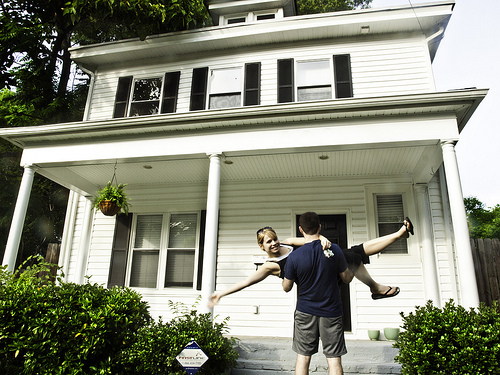Pennsylvania’s legislature is considering legislation that would end school property taxes and instead increase income and sales taxes to raise the $13 billion the state spends on K-12 schools.
“It’s been very well received,” said state Sen. Dave Argall (R-Schuylkill), cosponsor of Senate Bill 1400. “People just hate the school district property tax, and they’re really looking for a replacement.”
The measure would raise the state’s 3.07 percent income tax to 4 percent and make its 3 percent sales tax apply to all retail items and increase it from 6 to 7 percent.
Every state taxes property. Some do not have sales, corporate, or income taxes. Pennsylvania’s property taxes are ninth-highest in the nation, according to the Tax Foundation, a nonpartisan research organization. Many nearby states have even higher overall tax burdens, with New Jersey, New York, Ohio, and Maryland ranking among biggest taxers in the country.
Constituent complaints sparked the bills, Argall said.
“They’re afraid they’ll lose their homes because of this property tax, and they just see that it’s incredibly inefficient,” he said.
The state Senate Finance Committee held a public hearing Thursday, during which Sen. Mike Folmer (R-Lebanon County) said many Pennsylvanians are “renting their properties from school boards rather than owning their properties.”
Pennsylvania has considered similar measures for approximately 30 years.
Disentangle Schools, ZIP Codes?
The nation has funded schools from property taxes since its inception, notes Robert Enlow, president of the Friedman Foundation for Educational Choice.
“In the modern age, we should be thinking of new ways to fund schools,” he said.
Most property taxes connect school financing to houses, instead of to students and school performance, he said.
“This isn’t about how much money schools get; it’s about how effectively they’re funded. If I ask you right now, ‘How much money should a school get?’ that answer is going to vary widely,” he said. “My personal opinion is it doesn’t matter what the school gets. It matters what the child gets.”
Root Problem: Spending
Shifting the method of taxing does nothing to stop the cost drivers of government education, said Priya Abraham, senior policy analyst at the Commonwealth Foundation for Public Policy Alternatives.
“If you’re going to create a different method of taxation for public education, we also think you need to put in place taxpayer protection on that to limit spending growth,” she said.
She recommended school choice as an antidote to toxic tax levels.
“Once you inject competition and variety of choices parents can choose from for their kids, that improves standards and efficiency and tends to decrease costs across the board,” she said.
Several other unwise policies have contributed to Pennsylvania’s $13,000 per-pupil spending, which makes its K-12 system the nation’s eleventh-most expensive, she said.
Pennsylvania’s prevailing wage law requires taxpayers to pay workers a government-mandated wage for government construction projects of at least $25,000. Collective bargaining agreements have inflated these costs till they “far exceed what the market wage rate is for exactly the same labor and same scope,” Abraham said.
“On average, that’s inflating construction costs about 51 percent across Pennsylvania,” she said. “It’s difficult for schools to undertake renovations without unnecessarily inflating costs.”
Pensions are also straining school budgets, she said. Moving from a defined-benefit system to a defined-contribution system, the type most common in the private sector, “would be like getting the politics out of pensions,” she said, and would reduce expenses.
Spending Restraint
“I’ve had people point out to me if we don’t control the spending, it doesn’t matter where the money comes from, whether it’s income tax, sales tax, property tax,” Argall said.
Pennsylvania lawmakers closed tax loopholes several years ago—some around 2004 and others around 2011—and put news laws in place “that essentially tell school districts that they cannot spend more than the rate of inflation without putting it on the ballot for voter approval,” he said.
“We’ve seen some data that it has helped to a certain degree,” he said.
Senate cosponsors Jeffrey Piccola (R-Dauphin County) and Jim Ferlo (D-Allegheny) and their staffs did not return multiple requests for comment.
Image by Brent and Amanda.




